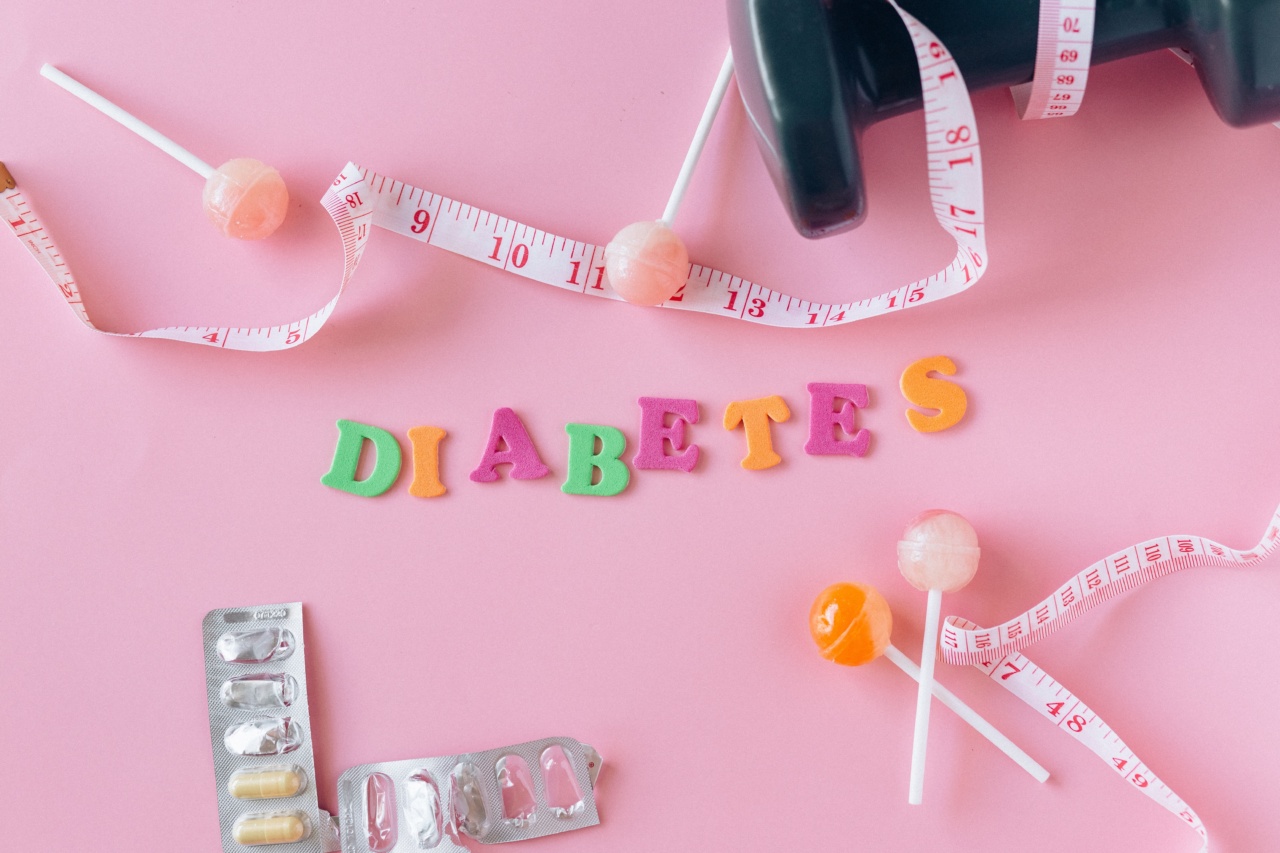Diabetes is a chronic metabolic disorder characterized by high blood sugar levels, and over time, it can have adverse effects on various parts of the body, including the eyes.
Vision loss is one of the most common complications seen in individuals with diabetes. In this article, we will delve into the relationship between diabetes and vision loss, exploring the causes, symptoms, and available treatments.
Understanding Diabetic Eye Diseases
Diabetic eye diseases are a group of conditions that affect the eyes and can lead to vision loss or even blindness. The main diabetic eye diseases include:.
1. Diabetic Retinopathy
Diabetic retinopathy occurs when the blood vessels in the retina, the light-sensitive tissue at the back of the eye, become damaged due to high blood sugar levels. The two types of diabetic retinopathy are:.
a) Non-proliferative Diabetic Retinopathy (NPDR)
NPDR is the early stage of diabetic retinopathy and is characterized by small areas of swelling and damage in the blood vessels of the retina. It may not cause noticeable symptoms initially but can progress to a more severe form.
b) Proliferative Diabetic Retinopathy (PDR)
PDR is an advanced stage of diabetic retinopathy where new blood vessels start growing on the surface of the retina. These new vessels are fragile and prone to leakage, leading to severe vision problems.
2. Diabetic Macular Edema (DME)
DME is a complication of diabetic retinopathy that specifically affects the macula, a part of the retina responsible for central vision. High blood sugar levels can cause fluid buildup in the macula, leading to blurred vision and distorted images.
Causes of Vision Loss in Diabetes
The high blood sugar levels associated with diabetes can lead to various changes in the eyes, resulting in vision loss. The major causes include:.
1. Damage to Blood Vessels
Prolonged high blood sugar levels can damage the blood vessels in the retina, causing them to leak or become blocked. This deprives the retina of the necessary oxygen and nutrients, leading to vision impairment.
2. Swelling of the Macula
In cases of diabetic macular edema, the macula swells due to fluid accumulation caused by blood vessel leakage. This swelling distorts the central vision, making it difficult to see fine details and perform daily tasks.
3. Increased Risk of Cataracts
Individuals with diabetes are more prone to developing cataracts, a condition characterized by clouding of the eye’s lens. Cataracts can further impair vision and may require surgical intervention for treatment.
4. Glaucoma
Diabetes is also associated with an increased risk of glaucoma, a group of eye diseases characterized by damage to the optic nerve. Glaucoma can cause gradual peripheral vision loss, leading to tunnel vision if left untreated.
Recognizing the Symptoms
Understanding the symptoms associated with diabetic eye diseases is crucial for early detection and timely intervention. Some common symptoms include:.
1. Blurred Vision
One of the earliest signs of diabetic eye diseases is blurry vision. Objects may appear hazy or out of focus, making it challenging to perform tasks that require sharp vision.
2. Floaters and Flashing Lights
Floaters are small specks or spots that seem to float across your field of vision, while flashing lights may appear as if there are flashes of lightning in your peripheral vision.
These symptoms could indicate the presence of retinal detachment, a serious complication requiring immediate medical attention.
3. Impaired Color Vision
Diabetic eye diseases can affect color vision, making it difficult to differentiate between shades of colors or see vibrant colors as they should be.
4. Dark or Empty Areas in Vision
As diabetic retinopathy progresses, dark or empty areas may appear in the visual field. This is a result of the damage occurring in the retina, leading to gaps in the images perceived.
Treating and Managing Diabetic Eye Diseases
While diabetic eye diseases may not be curable, various treatments can help slow their progression and manage the associated vision loss. Some common treatment options include:.
1. Blood Sugar Control
The primary step in managing diabetic eye diseases is to ensure optimal control of blood sugar levels. This can be achieved through dietary modifications, regular physical activity, and appropriate medication as prescribed by a healthcare professional.
2. Laser Photocoagulation
Laser photocoagulation is commonly used to treat diabetic retinopathy and DME. The procedure involves using a laser to seal off leaking blood vessels or destroy abnormal ones, thereby reducing the risk of further vision loss.
3. Anti-VEGF Injections
Anti-vascular endothelial growth factor (anti-VEGF) injections are a newer treatment option for diabetic macular edema. These injections help reduce macular swelling and improve vision by blocking the growth of abnormal blood vessels.
4. Vitrectomy
In advanced cases of diabetic retinopathy, where there is severe bleeding or retinal detachment, a surgical procedure called vitrectomy may be necessary.
During this procedure, the vitreous gel in the eye is removed and replaced to improve vision and prevent further complications.
Preventing Diabetic Eye Diseases
The best approach to managing diabetic eye diseases is prevention. Here are some essential preventive measures:.
1. Regular Eye Exams
Undergoing regular comprehensive eye exams is crucial for early detection and timely treatment of diabetic eye diseases.
The American Diabetes Association recommends annual eye exams for individuals with diabetes, or more frequently if advised by an eye care professional.
2. Blood Sugar Monitoring
Keeping blood sugar levels within target ranges can significantly reduce the risk of developing diabetic eye diseases.
Regular blood sugar monitoring helps individuals understand their levels and make necessary lifestyle adjustments to maintain optimal control.
3. Blood Pressure and Cholesterol Control
High blood pressure and cholesterol levels can worsen the impact of diabetes on vision health.
Managing these factors through a combination of medication, lifestyle modifications, and regular check-ups can help prevent or delay the onset of diabetic eye diseases.
Conclusion
Diabetes and vision loss are deeply interconnected, with diabetic eye diseases being a significant concern for individuals living with diabetes.
Understanding the causes, symptoms, and available treatments is essential for managing these complications effectively. By maintaining good blood sugar control, undergoing regular eye exams, and adopting a proactive approach to diabetes management, individuals can minimize the risk of vision loss and maintain optimal eye health despite having diabetes.



























